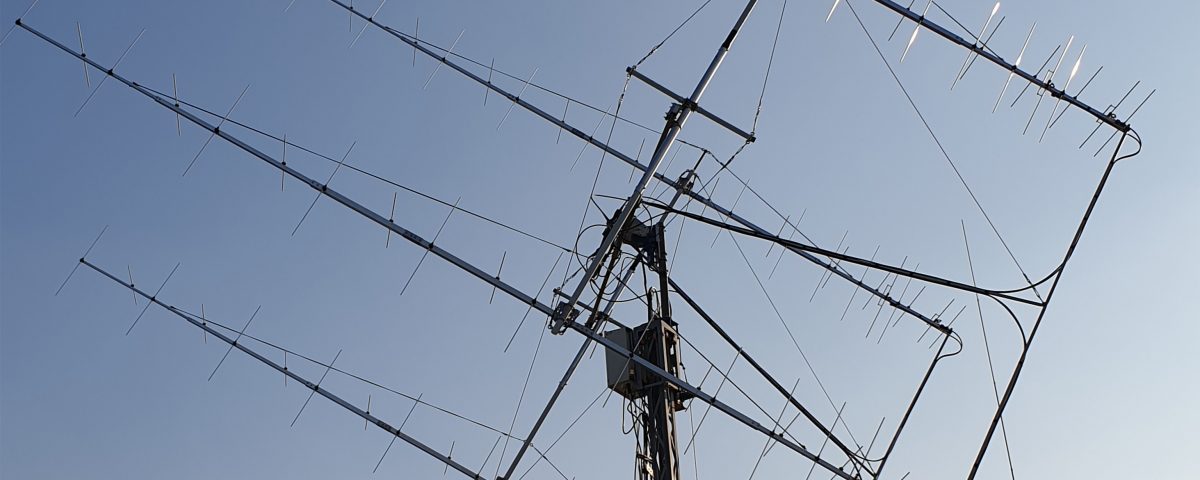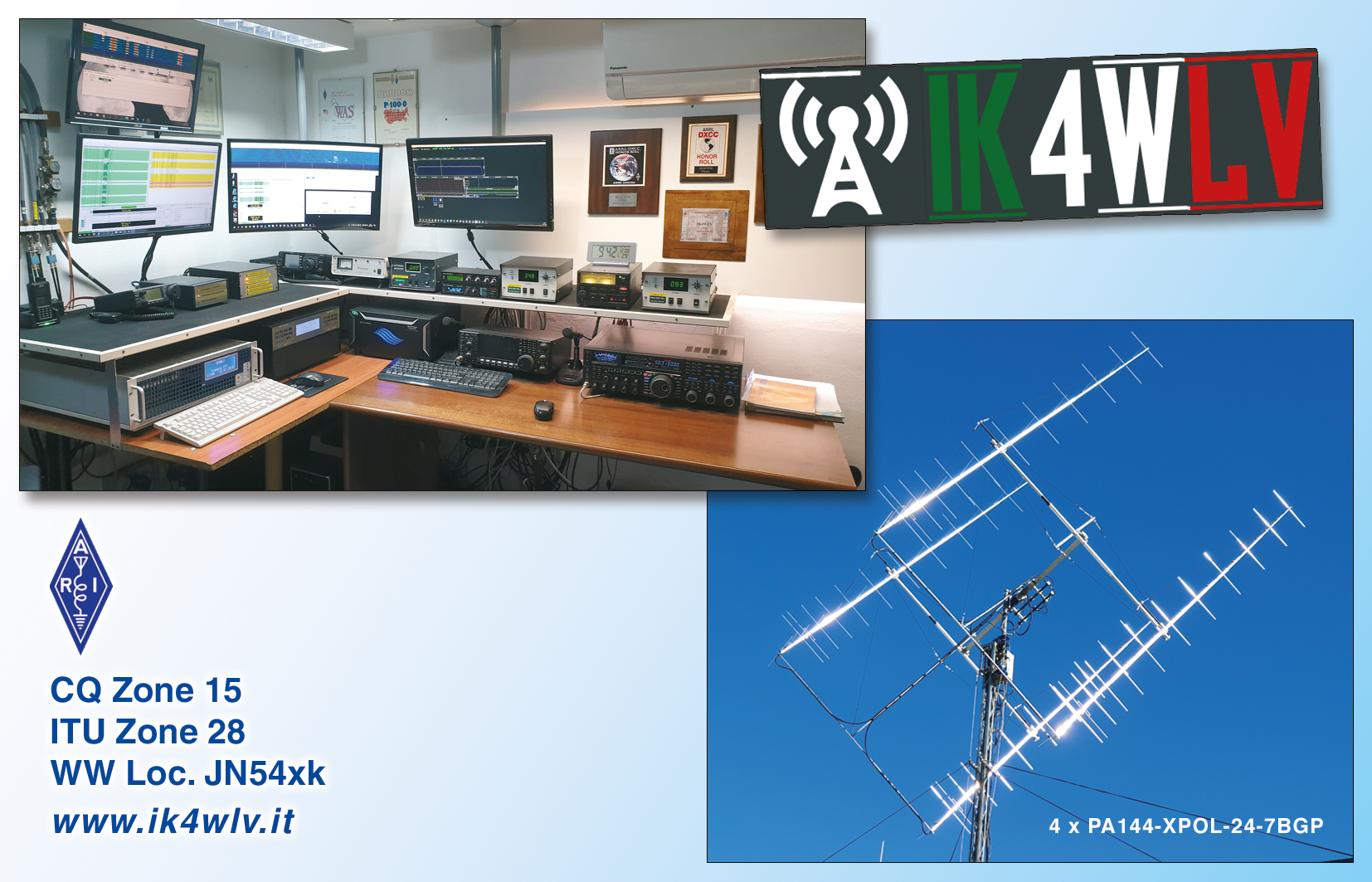Here we are again with the construction site open, always facing the Moon, after a little more than a year of honorable service, I dismantle the 2 x32 M2 antennas to make room for the new array of 4x PA144-CROSS-24-7BGP antennas, much shorter than the previous M2 antennas but really very performing.
The new antennas are well made and very robust, Goran YU1CF is always very helpful with explanations and data about the antennas.
The assembly of the PA144-CROSS-24-7BGP requires no manual, everything is carefully labelled, so that no parts can be reversed.
the first tests have been very positive, I have done very interesting listening to single yagi stations with power under 500 watts.
The SWR measured is on the order of 1:1 across the band and in both polarisations, even with wet antennas the SWR worsens very little Max 1:2/1.3
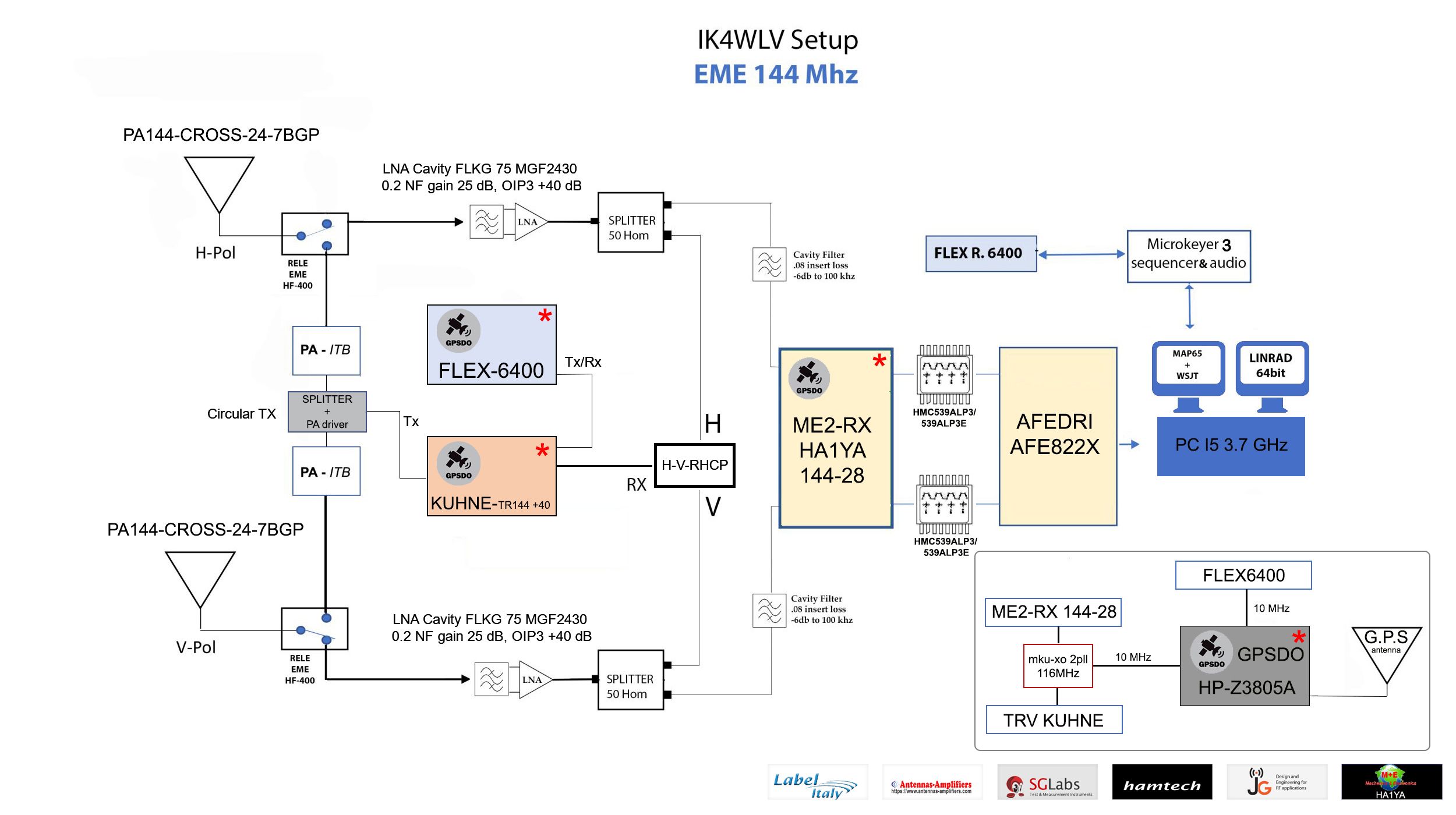
Apart from the mechanics, all the software management was also very complex without the help of Gianni Iw4ard , Ermanno Ik7ezn and Roberto iz4beh I would never have been able to complete all the receiving software part with the relevant hardware.
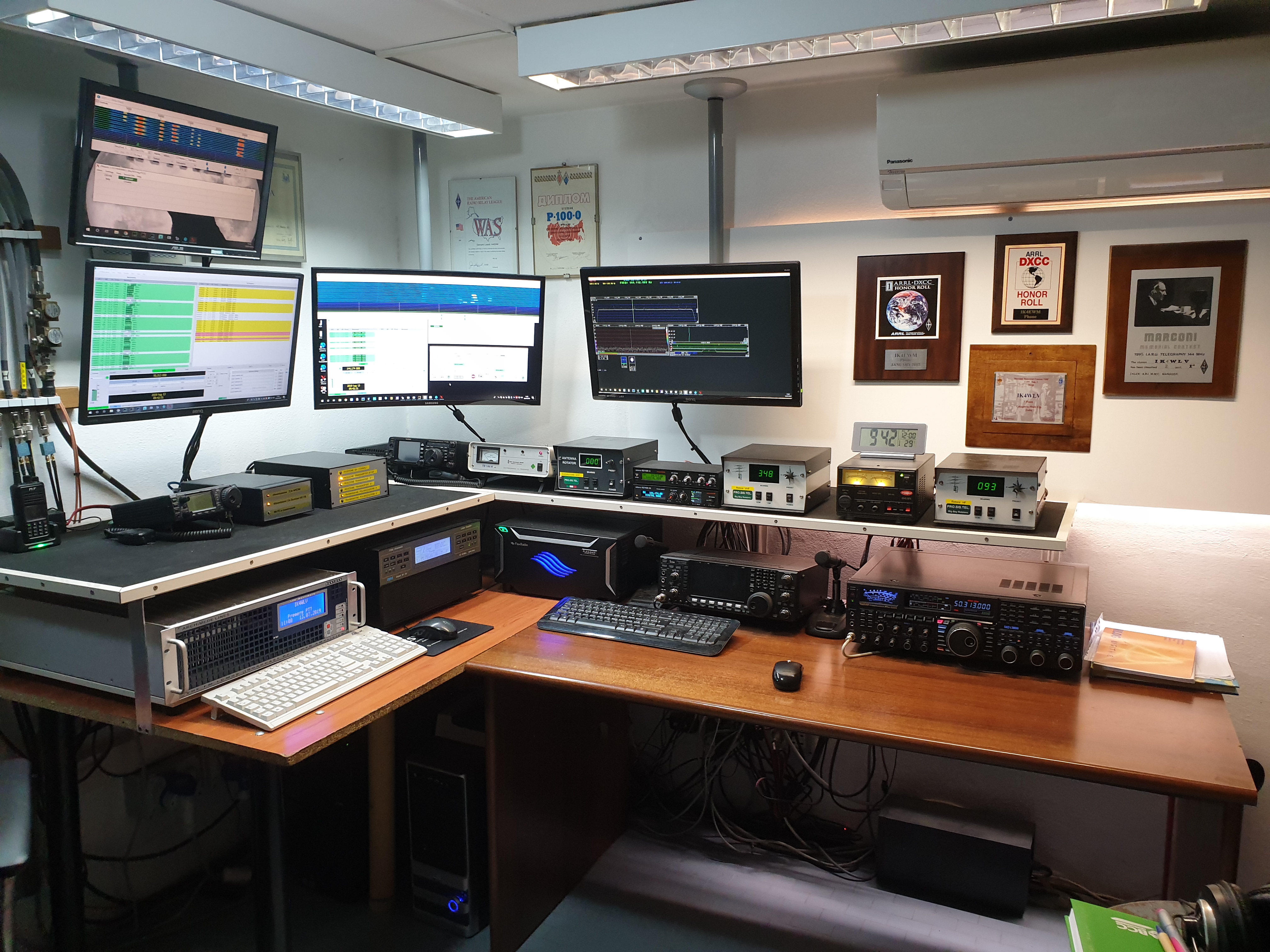
To say that the station is complete, I don't feel like it, as far as I'm concerned, I'm a river in flood! I like to think and realize always new things for this passion that for me is a beautiful one.
In the monitor on the left you can see the management software SDR FlexRadio 6400, in the centre the software Map65 K1JT for EME QSOs, on the right the software LINRAD Leif SM5BSZ
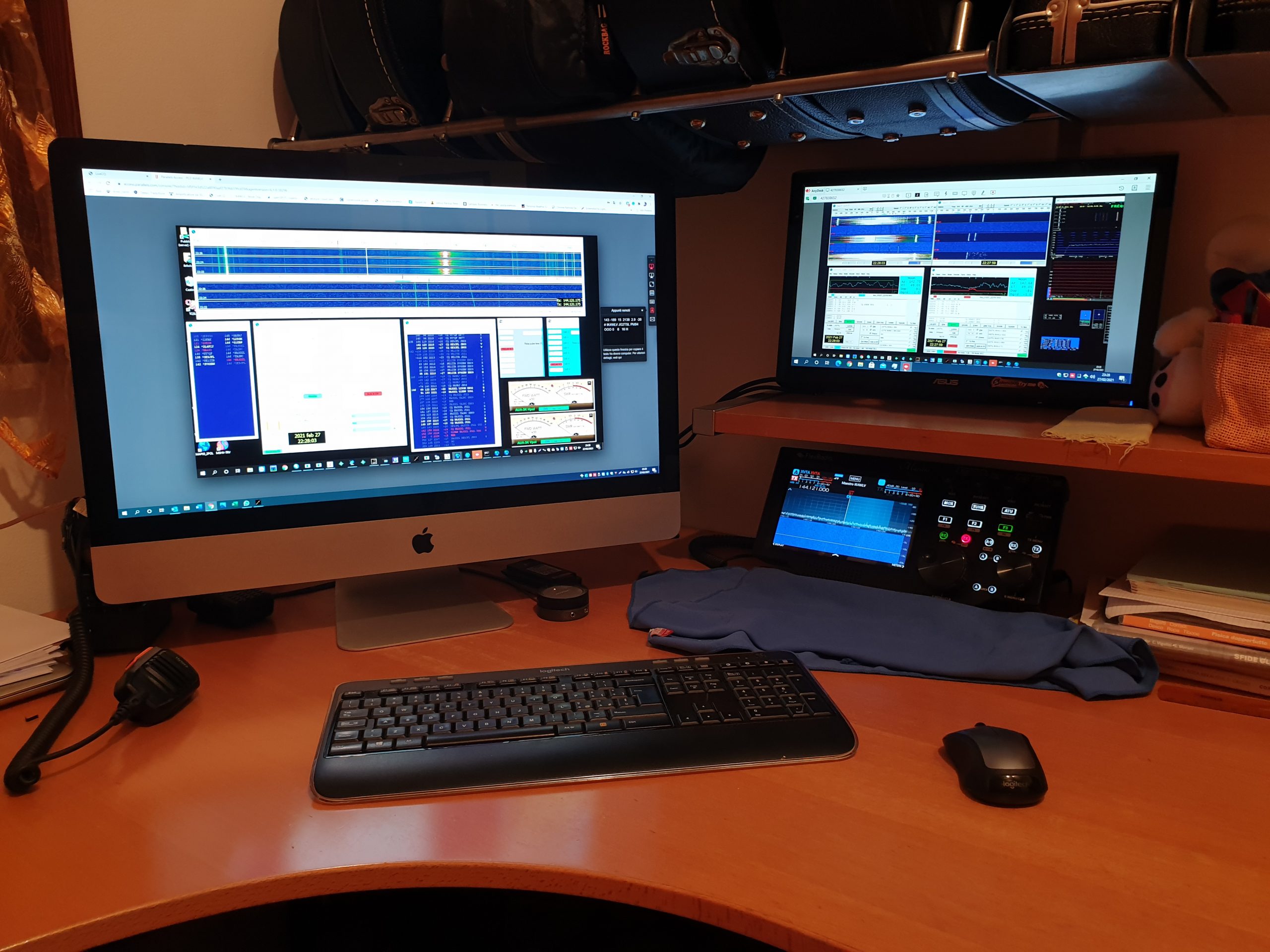
This is the remote control where I manage all the antennas and equipment in my station which is located at my QRL which is about 10 km away from my home.

New 4 x 24 PA144-CROSS-24-7BGP system work completed end of February 2020



I needed help for my Trasverter Khune, which at most can deliver 25 watts, but heats up a lot, needing a few more watts, I decided to assemble a small PA with LDMOS MRF6V2300n8 a pallet for RF FM class C capable of delivering even 300 watts, I brought the bias current from 25 ma for class C to 600 ma to be able to use it properly in SSB and underpowering it from 48 V nominal to about 30 V DC. Now the system is very stable and the modulation is perfect.
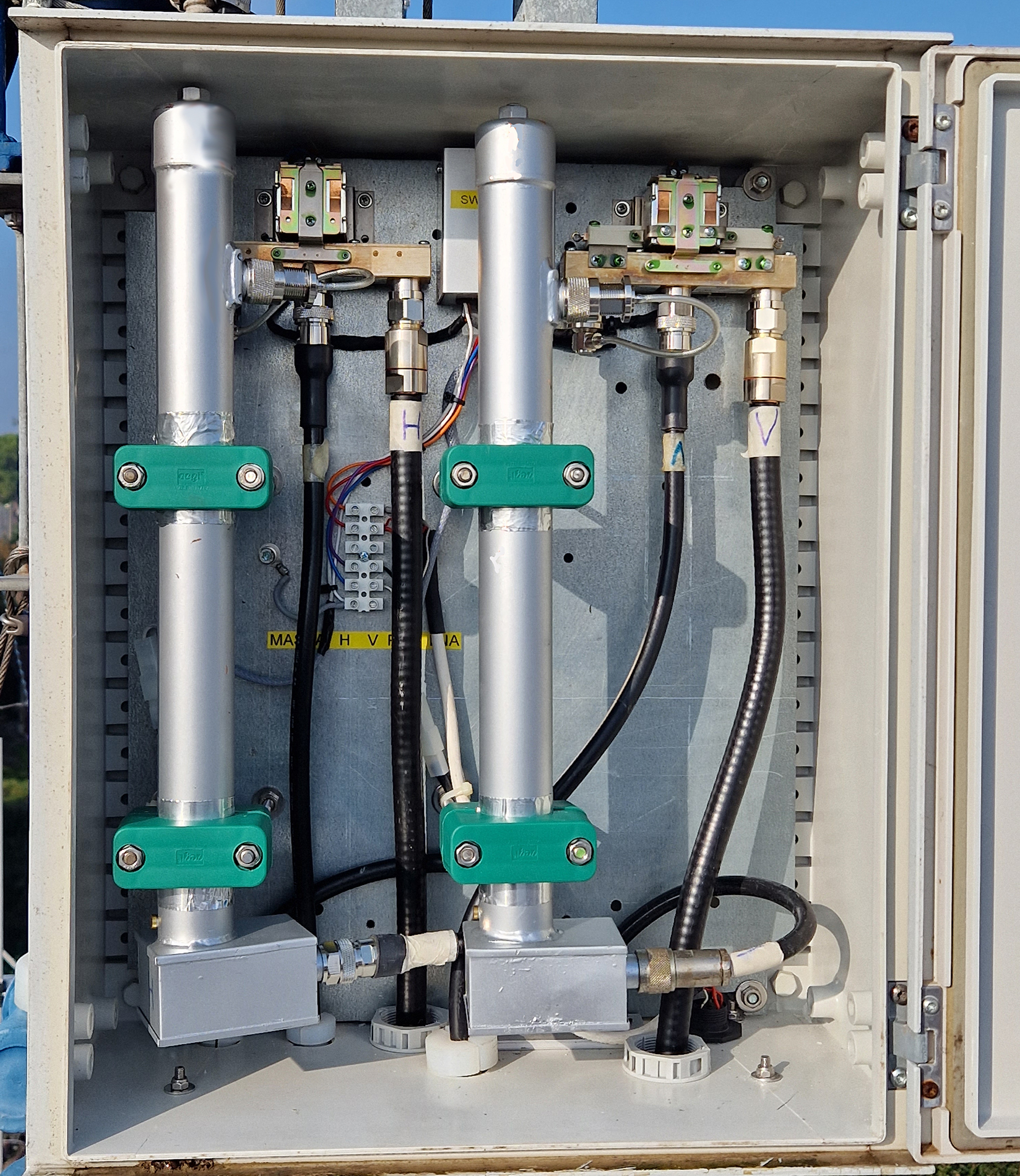

Left, you can see the watertight box where the EME-HF400 high-power relays are housed, the 2 LNAs in coaxial cavity FLKG 75 mgf2430 power GasFet .2 NF gain 25 dB, OIP3 +40 dB, BW out 3Mhz -3dB. In the right photo you can see the final RF part formed by 2 PAs from ITB one per polarization, the transmission is circular.
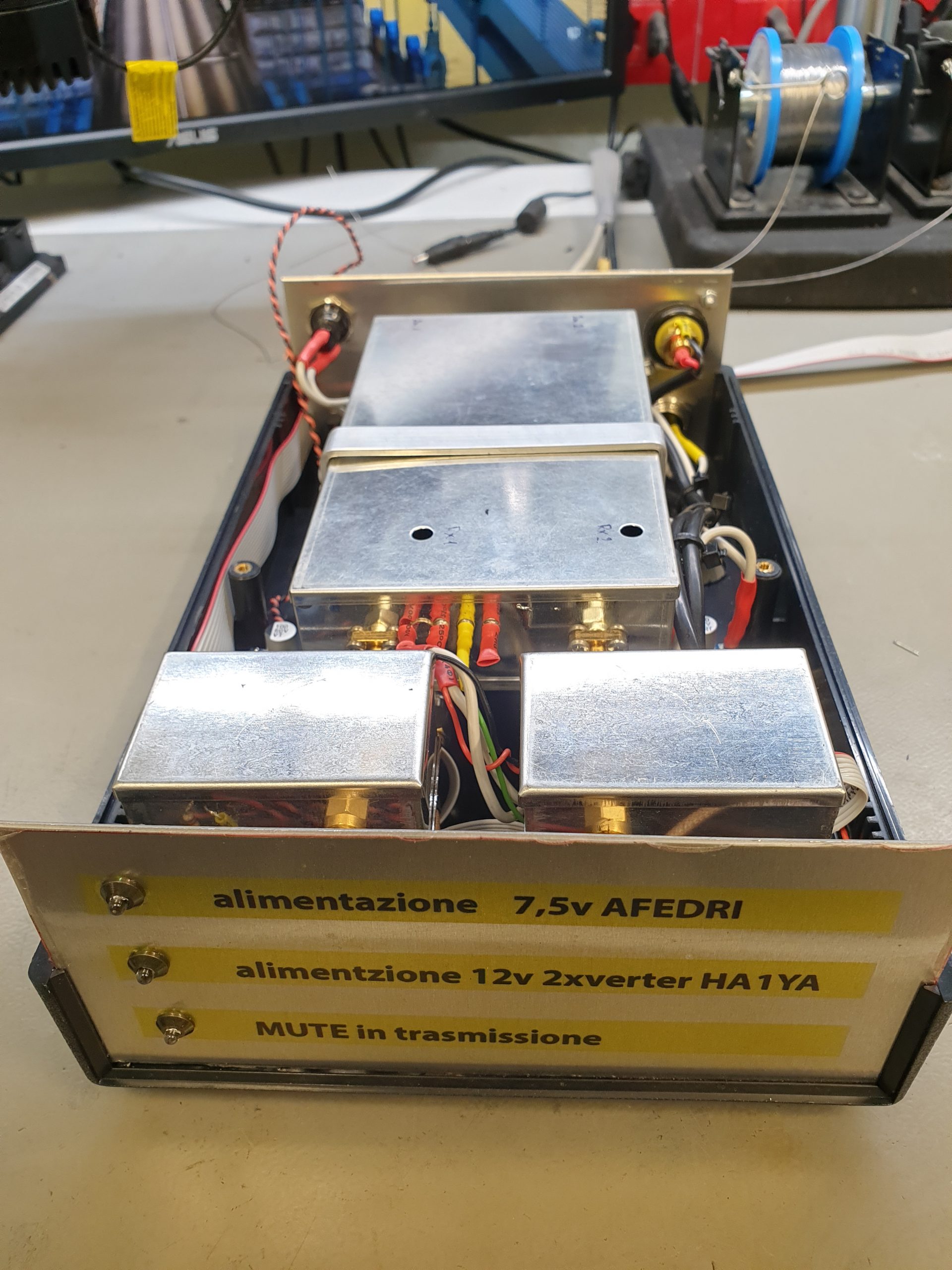
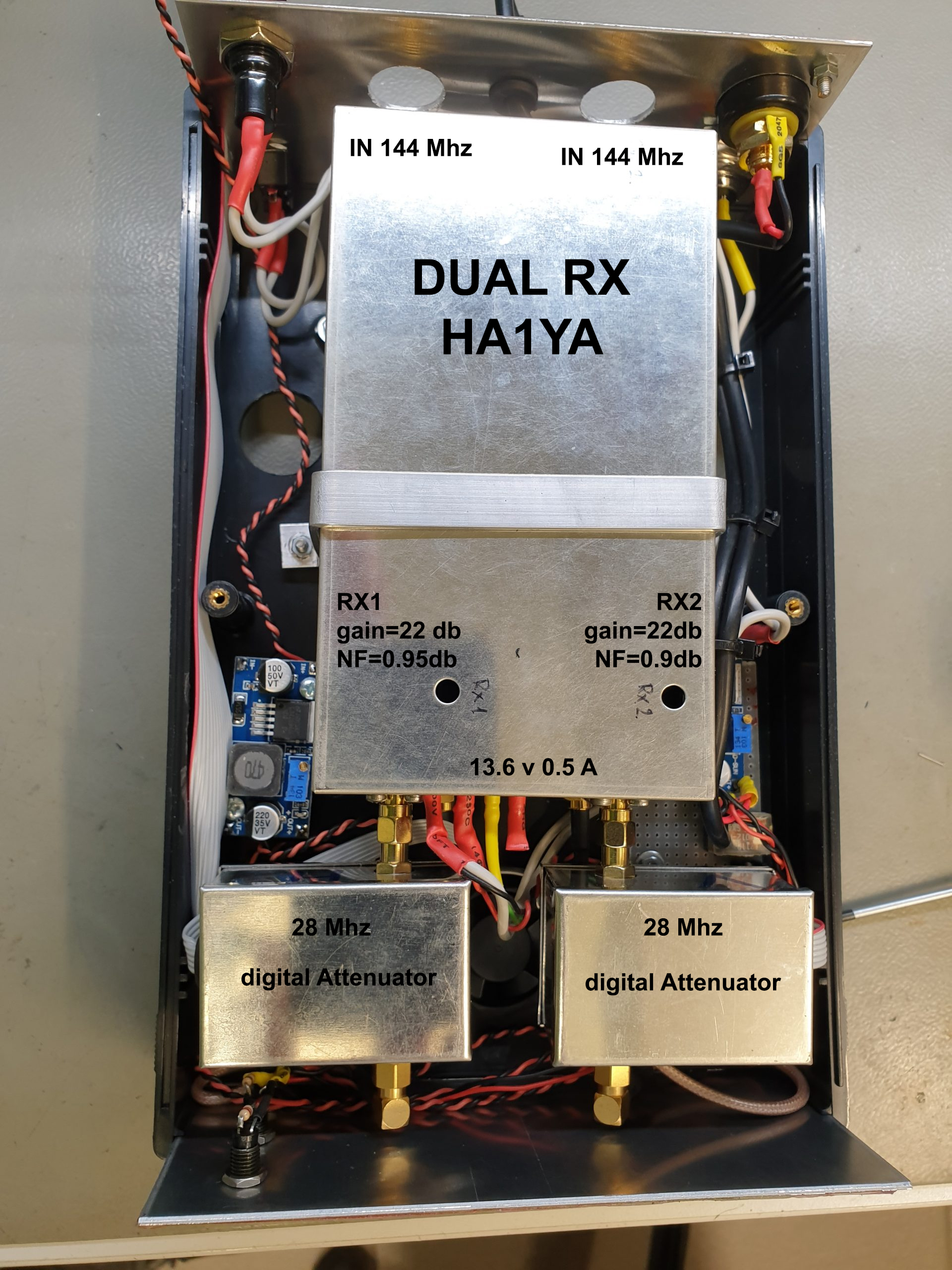
General view of the DualRX /Lan Afedri converter receiver/digital attenuators.
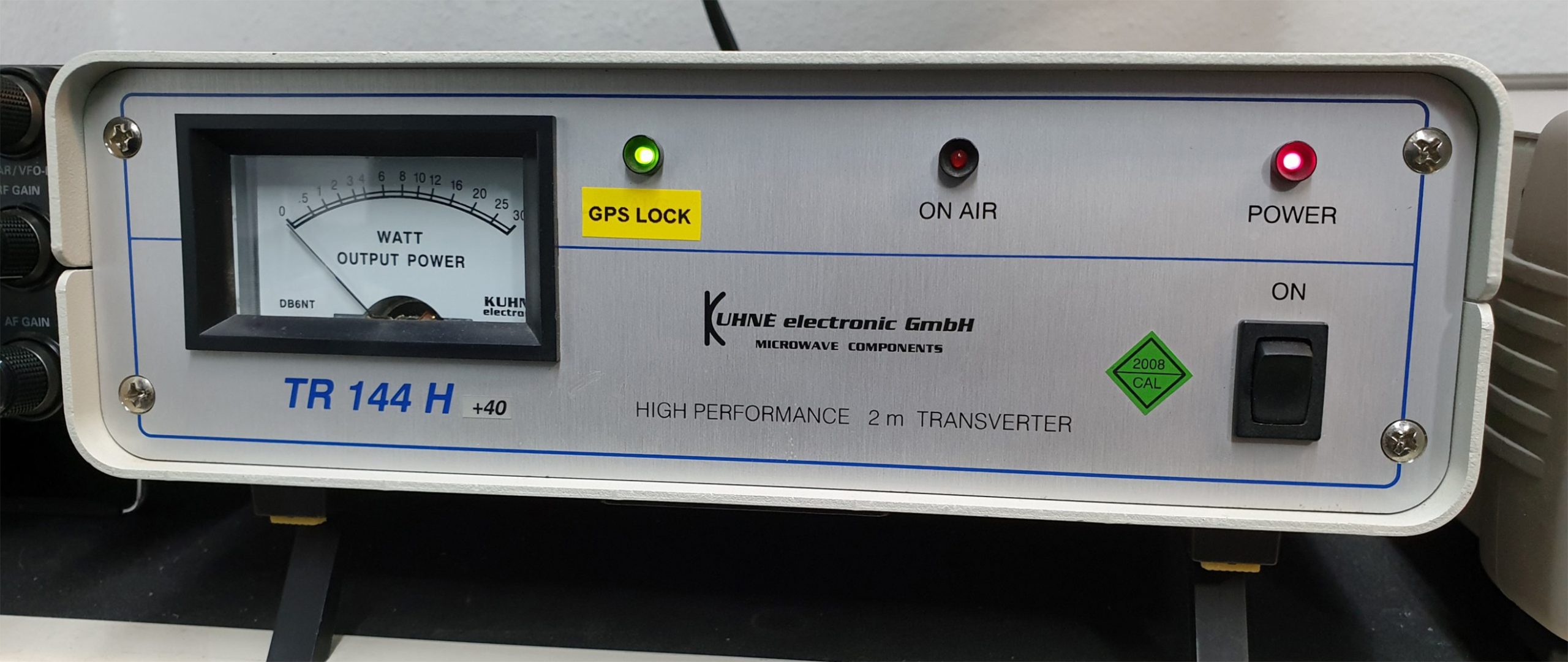
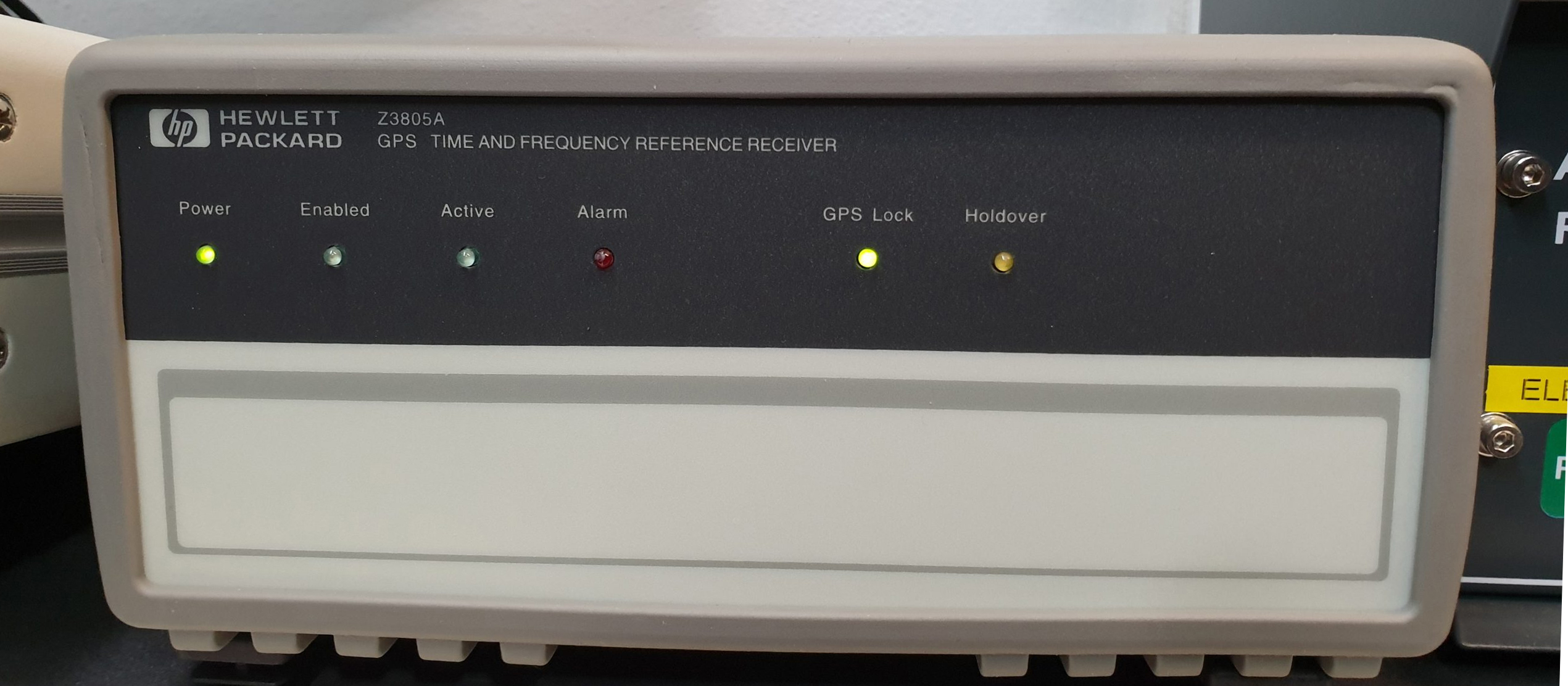

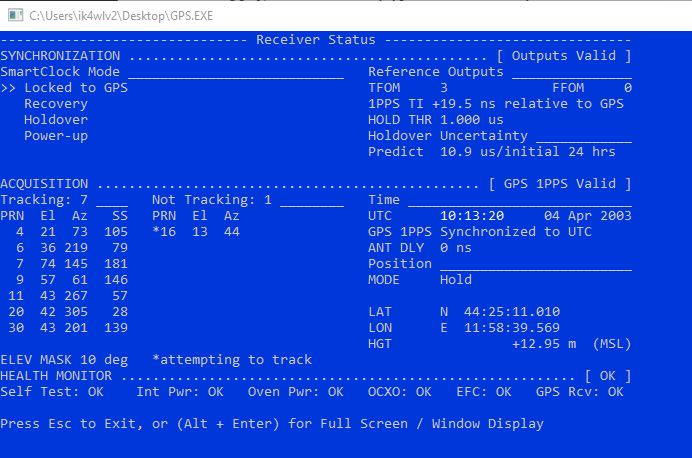
With the new Q65 digital system it has become essential to be frequency stable, this new decoding guarantees a good result if you stay within a 12-15 Hz drift in the 60 second period. now i provide a 10 Mhz blocked GPS signal to Flex radio6400 and transverter Kuhne+40
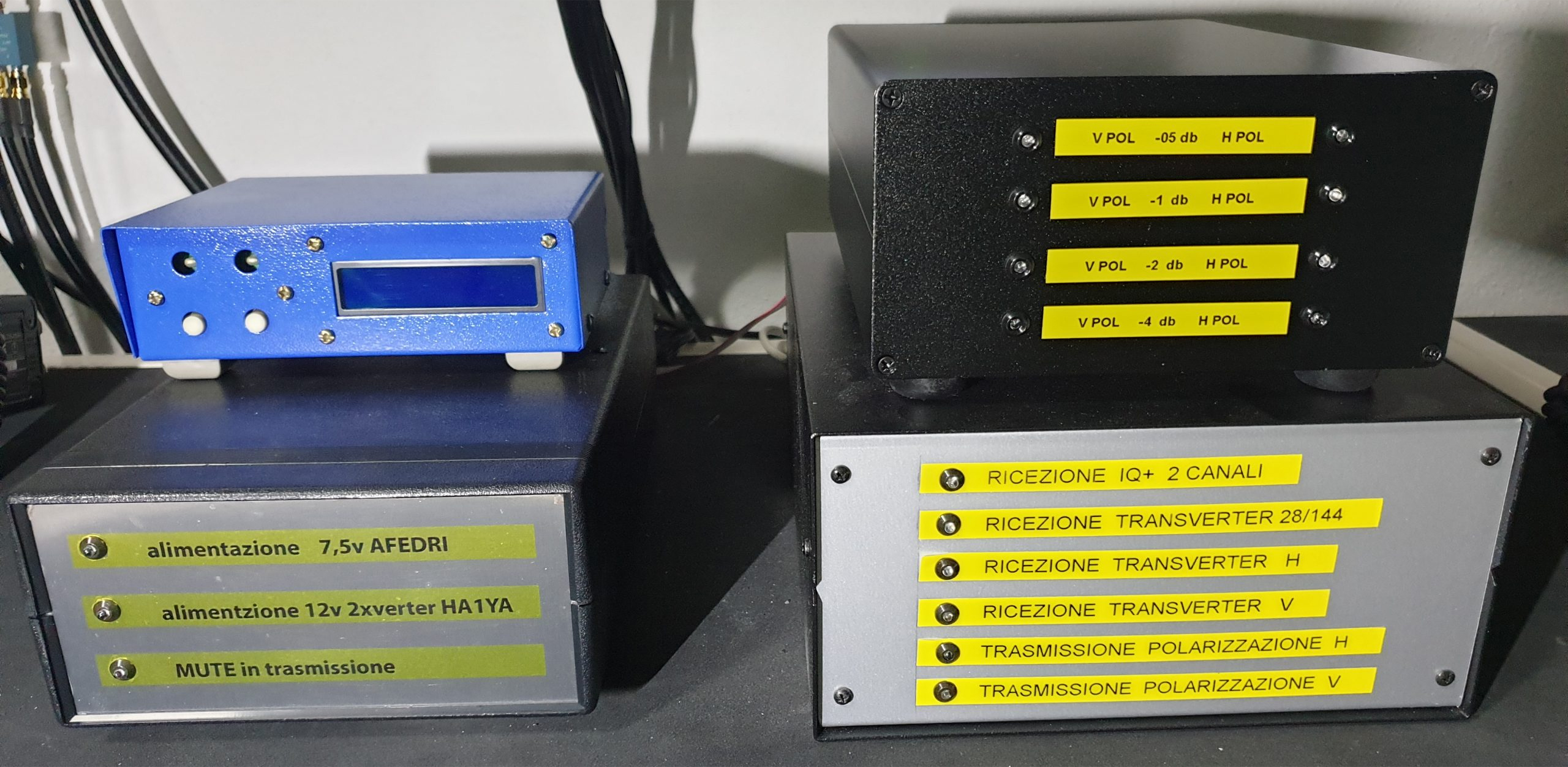
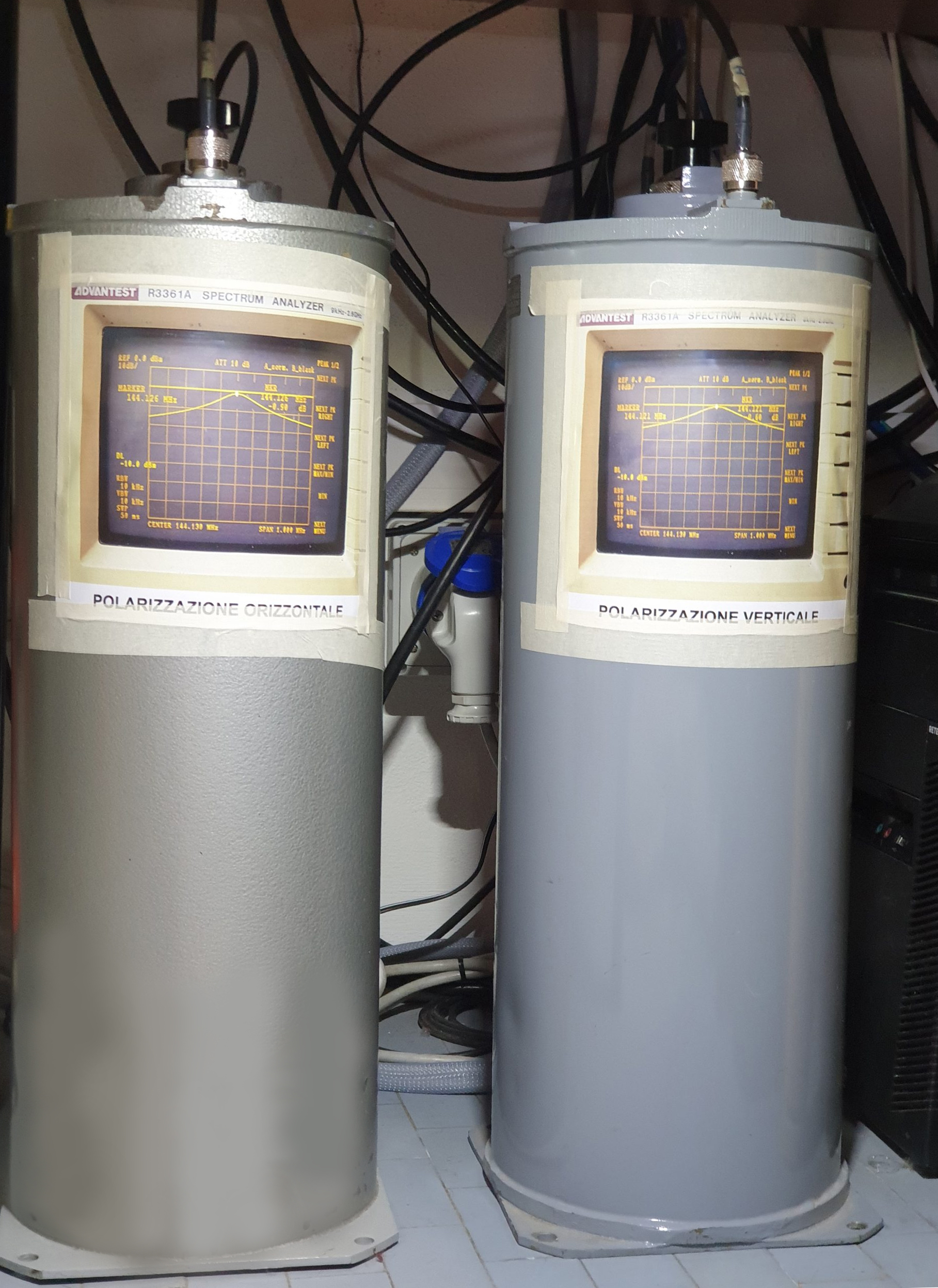
In the photo to the LEFT Interfaces connected to the network to remotely manage the whole system, switching, switching on all devices, reading power/reflection of LDMOS output stages, polarisation switching. In the photo to the RIGHT the 2 large cavities at the DualRX input.
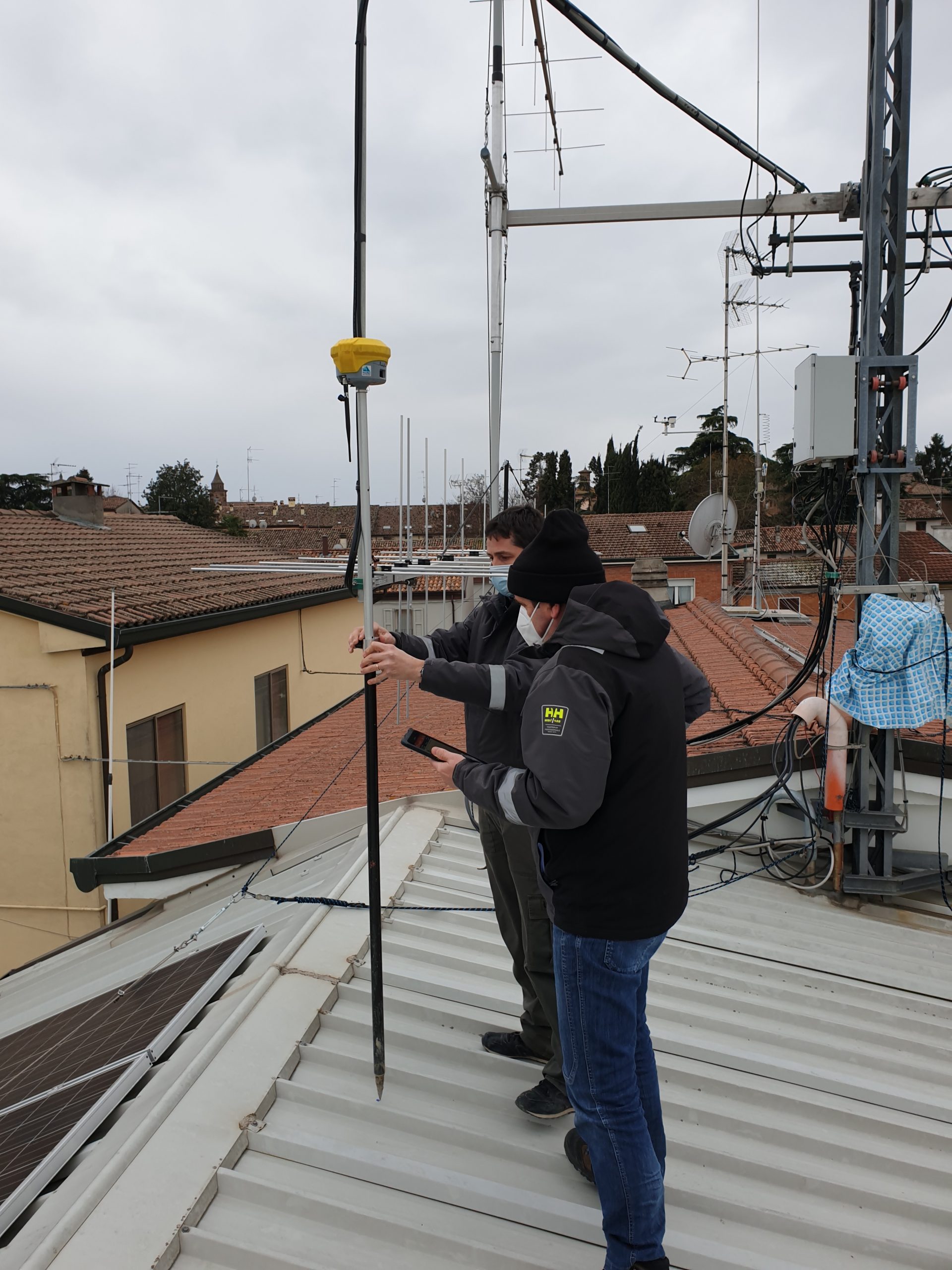
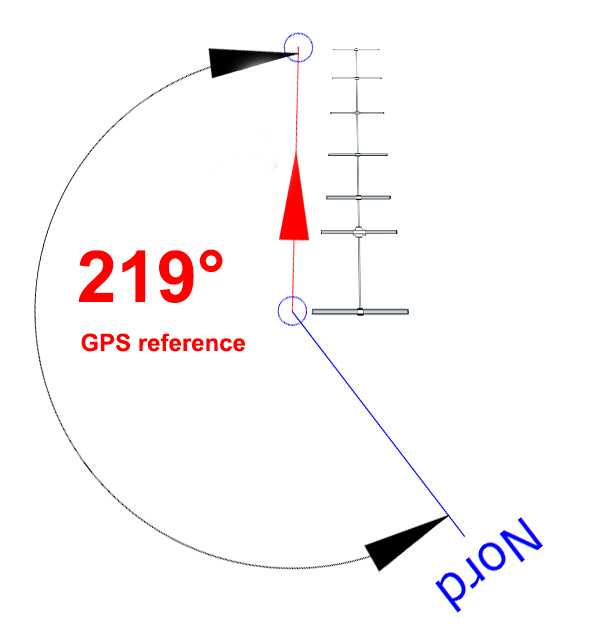
After modifying the azimuth rotor with an absolute encoder, I also made the starting reference more secure, with GPS pointing, thanks to Michele IZ4GWE for his friendship and professionalism. Now I have an exact reference to the degree, the margin of error is really minimal.

